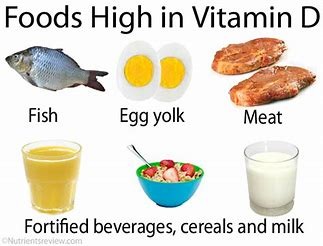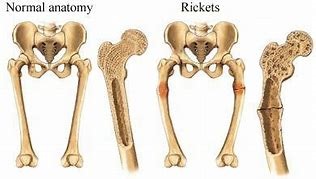In this article, I will be exploring the Need for Vitamin D Supplements. I will also share the need for sun exposure and the type of sun exposure needed for normal body production of vitamin D. Also, I’ll explore the reasons that supplementation is necessary. Especially due to our modern lifestyles. As well as, the reasons for children to have vitamin D supplements. But first, let’s look at a little history and the changes that have made vitamin D supplements necessary.

History leading to the Need for Vitamin D Supplements
In the 1900s the industrial revolution started, according to Bordelon, et. al. The advent of this drew more people out of the rural farms and out-of-doors occupations into factories. Most of these factories were built with very little natural light coming in. These working conditions contribute to vitamin D deficiency due to lack of sun exposure. The children of these workers also had decreased exposure to the sun because they were kept indoors more than rural children. This is when profound vitamin D deficiency started to manifest as Rickets. Rickets is a degenerative bone disease caused by the lack of vitamin D. This results in brittle bones, deformity of bones, and decreased bone mass. This epidemic led to fortifying food with vitamin D.
Vitamin D Sources
According to Esposito and Kotz, good sources of vitamin D include, fish such as wild-caught salmon, mackerel, tuna and sardines, as well as, beef liver, eggs, cod liver oil, and mushrooms. Vitamin D Fortified milk and other fortified foods such as breakfast cereals, yogurt, and orange juice can help boost vitamin D intake too. Vitamin D from animal sources is D3 called cholecalciferol and from a plant, sources are D2 called ergocalciferol. But the best source of vitamin D is sun exposure, but not just any sun exposure. The sun must be at the right angle to expose you to UV-B rays. The rule is if your shadow is longer than your body your skin is not manufacturing vitamin D.

Optimum Sun Exposure for Vitamin D Production
According to Dr. Michael Holick, a professor of medicine, physiology, and biophysics at the Boston University Medical Campus, you should follow these rules for sun exposure.
- Allow 10 to 15 minutes or so of unprotected sun exposure to your arms, legs, abdomen, and back.
- After the 10 to 15 minutes of unprotected exposure, use sun protection, like 30-SPF or higher sunblock.
- Choose the right time of day. Between 10 a.m. to 3 p.m. is the usual window for significant sun exposure.
What Happened Between the 20th and 21st Centuries?
In the early 20th century the disease Rickets was virtually eliminated in industrial society. The fortification of foods with vitamin D helped to solve the problem. So, why do we all of a sudden see an increase of vitamin D deficiency?
- The first reason is the increased use of vitamin D deficiency testing.
- Second, the early diagnosis of early symptoms of vitamin D deficiency due to testing.
- Third, the decreased exposure to the sun due to our society spending so much more to inside our homes and workplaces.
- Lastly, because of poor diets and processed foods.
Early Symptoms of Vitamin D Deficiency
According to Bordelon, et. al., the common symptoms of vitamin D deficiency are low back pain, muscle weakness, muscle aches, and throbbing bone pain elicited with pressure over the sternum (breast bone) or tibia (shin bone). These symptoms develop without any trauma due to exertion.
Children and the Need for Vitamin D Supplements
According to Basatemur, et.al, “There has been a marked increase the diagnosis of vitamin D deficiency in children over the past decade.” Children are spending much more time indoors. Our current modern lifestyle keeps them inside watching TV, playing video games, indulging in Social Media and using their smartphones. This can lead to decreased vitamin D and early symptoms of vitamin D deficiency. It can also lead to Rickets, which causes the child’s bones to fail to grow properly. This includes decreased bone density and deformation of bones. The deformation is usually seen as bow legs. This is why many of our children have a Need for Vitamin D Supplements.
For Adults and Children, Mood is Another Need for Vitamin D Supplements
According to Penckofer, et. al., they conducted a study to determine the effect of vitamin D supplementation on improving mood (depression and anxiety) and health status (mental and physical). The results concluded that there was a significant decrease in depression and anxiety with vitamin D supplements. The fact that vitamin D deficiency has a deleterious effect on mood has been shown in additional studies. This, in my opinion, is contributing to the increase in anxiety and depression that we are seeing in both adults and children. Again, showing the need for vitamin D supplements.

Recommendations for this Need for Vitamin D Supplements
- My first recommendation is more natural production of vitamin D through proper sun exposure. Our bodies were designed to do this, so it makes sense to get the proper sun exposure. Remember, you need slightly more sun exposure the darker your skin color is.
- If you experience any of the initial symptoms of vitamin D deficiency, see your doctor and get your vitamin D level checked. Including unexplained mood changes (depression or anxiety).
- Increase your consumption of vitamin D rich foods and vitamin D fortified foods.
Recommended supplement doses to satisfy your Need for Vitamin D Supplements
- First, consult your doctor, because too much vitamin D can interfere with calcium absorption, which leads to excessive blood calcium levels.
- Second, if your doctor recommends vitamin D supplements follow their recommendation exactly. They will often start you on 50,000 IU monthly until your vitamin D level is back to normal, according to Penckofer, et. al. Incidentally, vitamin D3 is superior for this treatment because, it increases the Vitamin D status better than D2 according to one study conducted by Jakobsen, et. al.
- Third, for the maintenance of proper vitamin D, you can supplement according to experts like Bordelon, et. al. They recommend maintenance dosages of vitamin D3 at 800 to 1,000 IU per day from dietary and supplemental sources. Less for children in accordance with their body weight.
Conclusions
The evidence is overwhelming. Because of our current society, we have less sun exposure, especially during the winter months. Winter often brings on depression in some people and often this is due to vitamin D deficiency. Also, we often eat poor diets that are vitamin D deficient. These factors and the reasons for them are why we have a need for vitamin D supplements. If you are symptomatic, please see your doctor and ask for your vitamin D level to be checked. If you are not symptomatic and want to make sure you don’t experience symptoms, follow the advice mention in this article.
For additional articles concerning your health Visit Here.
References
Basatemur, E., Horsfall, L., & Et. al. (2017, September 1). Trends in the Diagnosis of Vitamin D Deficiency. Retrieved from https://www.ncbi.nlm.nih.gov/pmc/articles/PMC5337117/
Esposito, L., & Kotz, D. (2018, July 18). How Much Time in the Sun Do You Need for Vitamin D?. Retrieved from https://health.usnews.com/wellness/articles/2018-07-18/how-much-time-in-the-sun-do-you-need-for-vitamin-d
Jakobsen, J., Andersen, E., & Et. al. (2018, January 10). Vitamin D Vitamers Affect Vitamin D Status Differently in Young Healthy Males. Retrieved from https://www.ncbi.nlm.nih.gov/pmc/articles/PMC5793240/
Paula Bordelon, Maria V. Ghetu, Robert C. Langan. (2009, October 15). Recognition and Management of Vitamin D Deficiency. Retrieved from https://www.aafp.org/afp/2009/1015/p841.html
Penckofer, S., Byrn, M., Adams, W., & Et. al. (2017, September 7). Vitamin D Supplementation Improves Mood in Women with Type 2 Diabetes. Retrieved from https://www.ncbi.nlm.nih.gov/pmc/articles/PMC5610883/

